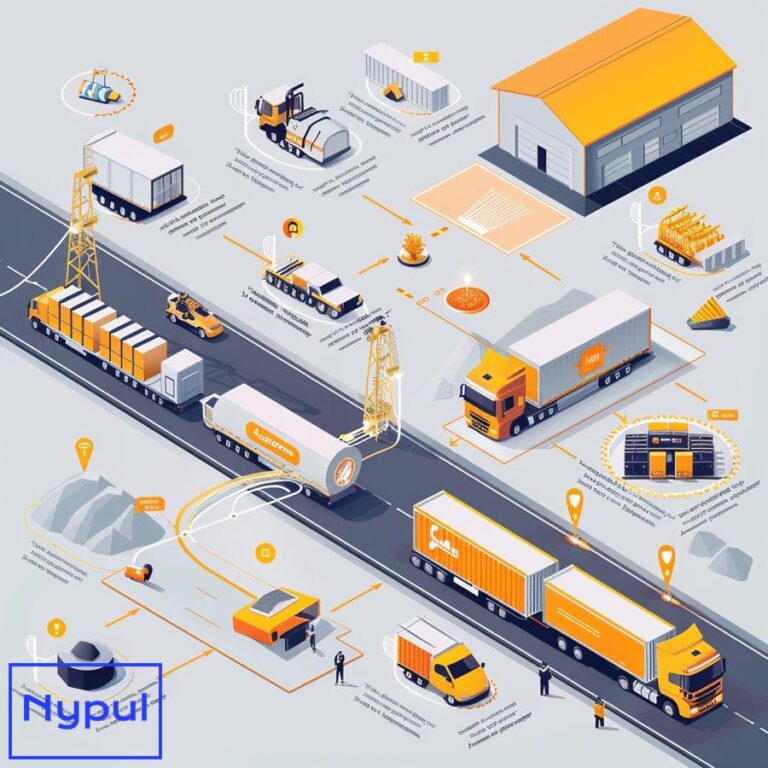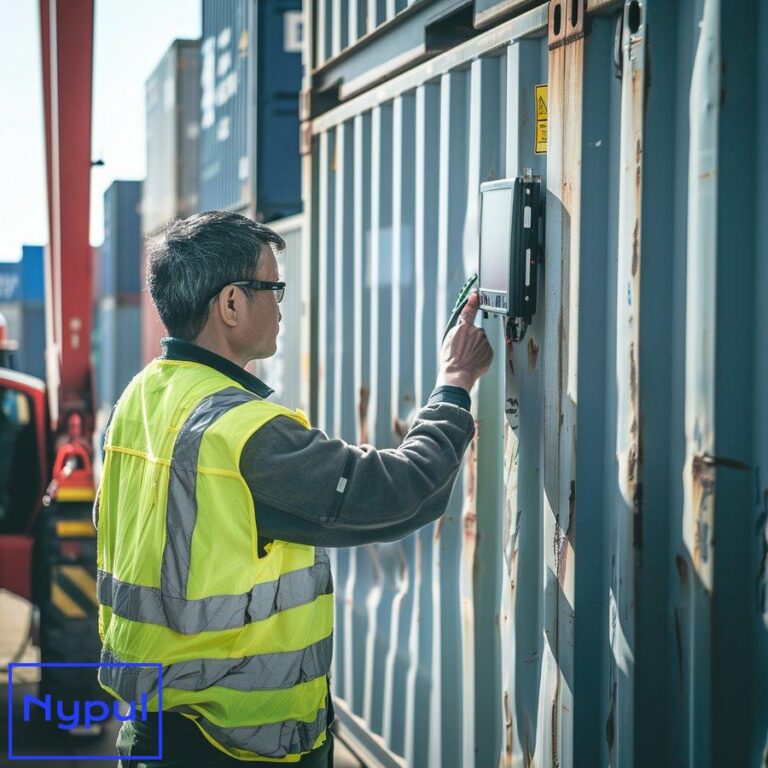How Does Freight Transport Affect the Environment
What are the main types of emissions from freight transport?
Freight transport, which includes the movement of goods by road, rail, air, and water, generates various types of emissions that can have significant environmental impacts. Understanding these emissions is crucial in developing strategies to mitigate their effects.
Greenhouse gas emissions: The primary greenhouse gases emitted by freight transport are carbon dioxide (CO2), methane (CH4), and nitrous oxide (N2O). These gases trap heat in the atmosphere, contributing to global warming and climate change. Heavy-duty trucks, rail, and water transport together account for more than 20% of CO2 emissions in the United States.
Criteria air pollutants: Freight transport also emits criteria air pollutants, such as nitrogen oxides (NOx), particulate matter (PM), carbon monoxide (CO), and volatile organic compounds (VOCs). These pollutants can have adverse effects on human health and the environment. Heavy-duty vehicles are the largest source of freight NOx and PM emissions, accounting for two-thirds of these pollutants.
Hazardous air pollutants: Freight transport may also release hazardous air pollutants (HAPs), such as benzene, formaldehyde, and diesel particulate matter. These pollutants are known or suspected to cause serious health effects, including cancer and reproductive problems.
Noise pollution: Freight transport, particularly rail and truck traffic, generates noise pollution that can disturb nearby communities and wildlife habitats.
Light pollution: Freight terminals, warehouses, and other freight-related facilities may contribute to light pollution, which can disrupt natural cycles and habitats.
Water and soil pollution: Freight transport can lead to water and soil pollution through spills, leaks, or improper disposal of hazardous materials, such as fuels, oils, and chemicals.
Habitat destruction: The construction and expansion of freight infrastructure, such as roads, railways, and ports, can lead to habitat fragmentation and destruction, negatively impacting wildlife and ecosystems.
How does freight transport contribute to air pollution and climate change?
Freight transport is a significant contributor to air pollution and climate change due to its reliance on fossil fuels and the emissions generated by various modes of transportation.

Road freight: Heavy-duty trucks are the largest source of freight-related air pollution and greenhouse gas emissions. These vehicles primarily run on diesel fuel, which produces high levels of particulate matter, nitrogen oxides, and carbon dioxide.
Rail freight: Freight trains also contribute to air pollution and climate change, particularly those powered by diesel locomotives. While rail is generally more fuel-efficient than road transport, the cumulative emissions from freight rail can still be significant.
Air freight: Air cargo transport is a relatively small but rapidly growing contributor to freight emissions. Aircraft engines emit greenhouse gases, particulate matter, and other pollutants, especially during takeoff and landing.
Marine freight: Ships, particularly those that use heavy fuel oil, emit significant amounts of sulfur oxides, nitrogen oxides, and particulate matter. International shipping is responsible for about 10.6% of total transport-related CO2 emissions.
Intermodal freight: The combination of different modes of transport, such as truck-rail or truck-ship, can help reduce emissions per ton-mile of freight moved. However, the overall environmental impact of intermodal freight depends on the specific modes used and the efficiency of each component.
To mitigate the air pollution and climate change impacts of freight transport, strategies such as transitioning to alternative fuels, improving vehicle efficiency, and optimizing freight networks can be implemented.
What are the impacts of noise and light pollution from freight activities?
Noise and light pollution from freight transport and related activities can have significant impacts on human health, wildlife, and the environment.
Noise pollution impacts:
– Exposure to excessive noise can lead to hearing loss, sleep disturbance, and increased stress levels in humans.
– Noise pollution can also disrupt the communication, foraging, and breeding behaviors of wildlife, particularly in sensitive habitats.

Light pollution impacts:
– Artificial light at night can disrupt circadian rhythms and melatonin production in humans, leading to sleep disorders and other health issues.
– Light pollution can disorient and attract nocturnal animals, leading to increased predation, disrupted migration patterns, and altered reproductive behaviors.
– Excessive light can also interfere with astronomical observations and contribute to energy waste.
Mitigation strategies:
– Implementing noise-reducing technologies, such as low-noise tires and brakes, and sound barriers.
– Optimizing freight routes and schedules to minimize noise impacts on sensitive areas.
– Using energy-efficient, directional lighting and motion sensors to reduce light pollution from freight facilities.
– Educating the public and freight industry stakeholders on the importance of noise and light pollution reduction.
By addressing noise and light pollution from freight transport and related activities, we can minimize the negative impacts on human health, wildlife, and the environment.
How does freight transport affect water and soil quality?

Freight transport can have significant impacts on water and soil quality through various mechanisms, including spills, leaks, and improper disposal of hazardous materials.
Water pollution impacts:
– Freight transport can lead to the release of fuels, oils, chemicals, and other pollutants into nearby water bodies, harming aquatic ecosystems and contaminating drinking water sources.
– Sediment from construction and erosion related to freight infrastructure can increase turbidity and sedimentation in waterways, affecting aquatic life and water quality.
Soil pollution impacts:
– Spills and leaks of hazardous materials during freight transport or storage can contaminate soil, leading to long-term damage and potential groundwater contamination.
– Heavy metals and other pollutants from vehicle emissions can accumulate in soils near freight routes and facilities, affecting soil health and productivity.
Mitigation strategies:
– Implementing spill prevention and response plans for freight transport and storage facilities.
– Treating and properly disposing of wastewater generated by freight activities.
– Implementing erosion and sediment control measures during construction and maintenance of freight infrastructure.
– Remediating contaminated soils and groundwater affected by freight-related pollution.
– Promoting sustainable freight practices, such as the use of alternative fuels and technologies to reduce the risk of spills and leaks.
By addressing water and soil pollution from freight transport, we can protect the health of aquatic and terrestrial ecosystems, as well as human health and well-being.
What is the relationship between freight transport and habitat destruction?
Freight transport and related infrastructure can have significant impacts on wildlife habitats, leading to habitat loss, fragmentation, and degradation.
Habitat loss:
– The construction of roads, railways, ports, and other freight infrastructure often requires clearing and converting natural habitats, such as forests, wetlands, and grasslands.
– Freight transport can also contribute to urban sprawl and the expansion of industrial and commercial areas, further reducing available habitat for wildlife.
Habitat fragmentation:
– Freight infrastructure, such as highways and railways, can divide continuous habitats into smaller, isolated patches, making it difficult for wildlife to move between them.
– Fragmentation can lead to reduced genetic diversity, increased competition for resources, and higher risk of local extinctions.
Habitat degradation:
– Freight transport can contribute to habitat degradation through pollution, noise, light, and other disturbances that alter the physical and chemical characteristics of the environment.
– These changes can make habitats less suitable for certain species, leading to shifts in community composition and ecosystem functions.
Mitigation strategies:
– Implementing wildlife corridors and overpasses to facilitate safe movement of animals across freight infrastructure.
– Minimizing the footprint of freight infrastructure and prioritizing the use of previously disturbed or degraded lands.
– Restoring and rehabilitating degraded habitats affected by freight-related activities.
– Incorporating wildlife-friendly design features, such as noise barriers and light shielding, into freight infrastructure and facilities.
By addressing the impacts of freight transport on wildlife habitats, we can help maintain biodiversity, ecosystem resilience, and the long-term sustainability of freight operations.
How does freight transport contribute to energy consumption and resource depletion?
Freight transport is a significant consumer of energy and natural resources, contributing to resource depletion and the environmental impacts associated with resource extraction and processing.
Energy consumption:
– Freight transport relies heavily on fossil fuels, such as diesel and gasoline, to power vehicles and equipment.
– The energy required for freight transport varies depending on the mode, with air freight being the most energy-intensive per ton-mile, followed by road, rail, and water transport.
Resource depletion:
– The extraction and processing of fossil fuels used in freight transport can lead to habitat destruction, water pollution, and greenhouse gas emissions.
– The production of vehicles, infrastructure, and equipment for freight transport requires significant amounts of raw materials, such as steel, aluminum, and concrete, contributing to resource depletion.
Mitigation strategies:
– Transitioning to alternative fuels, such as biofuels, natural gas, and electricity, to reduce reliance on fossil fuels.
– Improving vehicle and equipment efficiency through technological advancements and better maintenance practices.
– Optimizing freight networks and routes to minimize energy consumption and emissions.
– Promoting the use of recycled and renewable materials in the construction and maintenance of freight infrastructure and equipment.
– Investing in research and development of new technologies and materials to reduce the environmental impact of freight transport.
By addressing the energy consumption and resource depletion associated with freight transport, we can help mitigate the environmental impacts and promote the long-term sustainability of the freight industry.
What strategies can mitigate the environmental impact of freight transport?
Several strategies can be implemented to mitigate the environmental impact of freight transport, ranging from technological advancements to policy changes and stakeholder collaboration.

Technological strategies:
– Transitioning to alternative fuels, such as biofuels, natural gas, and electricity, to reduce greenhouse gas and air pollutant emissions.
– Improving vehicle and equipment efficiency through technologies like aerodynamic improvements, lightweight materials, and hybrid-electric systems.
– Implementing emission control technologies, such as diesel particulate filters and selective catalytic reduction systems, to reduce air pollutant emissions.
– Developing and deploying advanced technologies for noise and light pollution reduction, such as low-noise tires and directional lighting.
Operational strategies:
– Optimizing freight networks and routes to minimize travel distances and reduce emissions and energy consumption.
– Implementing just-in-time delivery and other supply chain optimization strategies to reduce the need for storage and handling of freight.
– Promoting intermodal freight transport to take advantage of the efficiency of different modes, such as rail and water transport for long-haul movements.
– Implementing spill prevention and response plans to minimize the risk of water and soil pollution from freight transport and storage.
Policy and regulatory strategies:
– Establishing emissions standards and fuel efficiency regulations for freight vehicles and equipment.
– Implementing carbon pricing or cap-and-trade systems to incentivize the adoption of low-emission technologies and practices.
– Providing tax incentives or subsidies for the purchase of alternative fuel vehicles and the deployment of emission control technologies.
– Enforcing regulations on the handling, storage, and disposal of hazardous materials used in freight transport.
Stakeholder collaboration and education:
– Engaging with freight industry stakeholders, including carriers, shippers, and logistics providers, to develop and implement best practices for environmental sustainability.
– Collaborating with local communities and environmental organizations to identify and address the specific environmental concerns related to freight transport in their areas.
– Educating the public and freight industry stakeholders on the environmental impacts of freight transport and the importance of mitigation strategies.
By implementing a combination of technological, operational, policy, and collaborative strategies, we can significantly reduce the environmental impact of freight transport and promote a more sustainable freight system.






